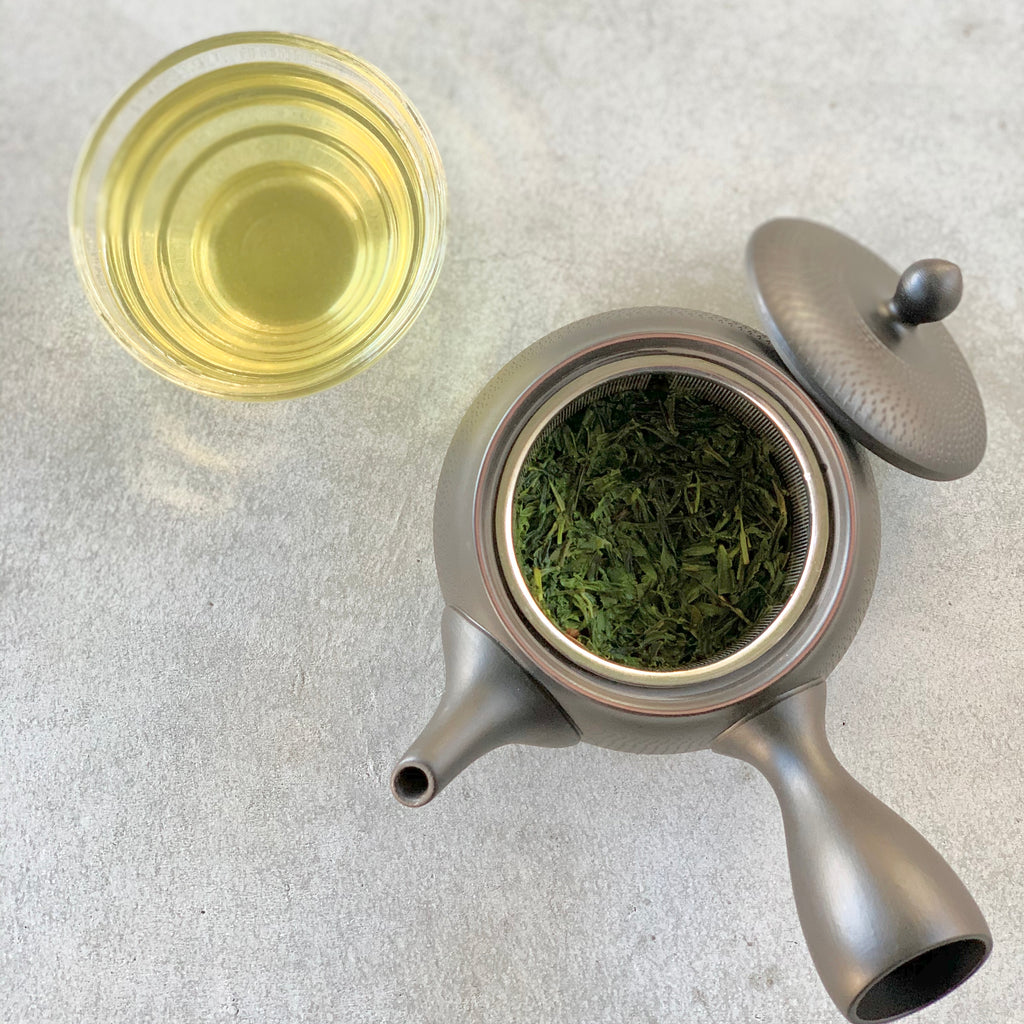You can brew sencha up to three times. The taste and aroma will change from the first infusion to the third infusion.
1. The First Infusion
The first infusion has the strongest aroma and taste.
In particular, the theanine and glutamic acid that are the source of umami are leached out most. Caffeine, which is an awakening element, also leaches out most in this first infusion.
If you intend to brew the second and third infusions, pour the tea in the teapot to the last drop. Also, after pouring, hit the bottom of the kyusu to return the tea leaves that have solidified in the spout to the center of the kyusu. When you finish the first infusion, leave the lid of kyusu open or slide to expose fresh air. By doing so, you can enjoy the second infusion without having it over steamed and the bitterness component coming out too much. At this point, about 80% of the tea leaves in the teapot should have opened, returning to the original shape they had when picked from the tea farm.
2. The Second Infusion
The second infusion is brewed at a higher temperature than the first.
If you don't intend to brew the third infusion, wait for half the time of the first cup to infuse most of the remaining ingredients. For example, wait for 30 sec if you brewed the first cup in 60 sec. If you want to taste the third infusion, infuse and pour it into cup immediately without waiting.
In the second infusion, theanine and glutamic acid which are the source of umami, and caffeine content are reduced. However, the overall taste is well balanced. Some people prefer the second infusion. Also, some of the first flush green tea (shincha) generates a stronger taste in the second infusion rather than the first infusion.
The tea leaves in the kyusu are fully opened when the second infusion has been brewed, and the color of water of the second infustion sometimes become darker green than the first infusion. If you brew the third infusion, leave the lid of kyusu open or slide, just like you did after the first infusion to keep it from over steamed.
3. The Third Infusion
The third infusion is brewed at the same temperature as the second infusion. In the third infusion, the umami component is reduced, but curiously, caffeine is more leached than in the second infusion. The catechin, especially gallate-type catechin(Ecg and EGCg) is also increased. Bitterness and astringency are increased, while umami of strong taste is gone. So the overall taste becomes light followed by very clear bitterness and astringency, which makes your mouth feel refreshed. It is the perfect taste to finish multiple infusions.
The tea leaves after infusions can be eaten with soy sauce. You can take insoluble ingredients such as carotene, vitamin E, and dietary fiber. Such tea leaves with soy sauce go well with alcoholic beverages such as Japanese sake or beer.
Some people call such a way of enjoying tea from the first infusion to eating tea leaves a "tea full course."

